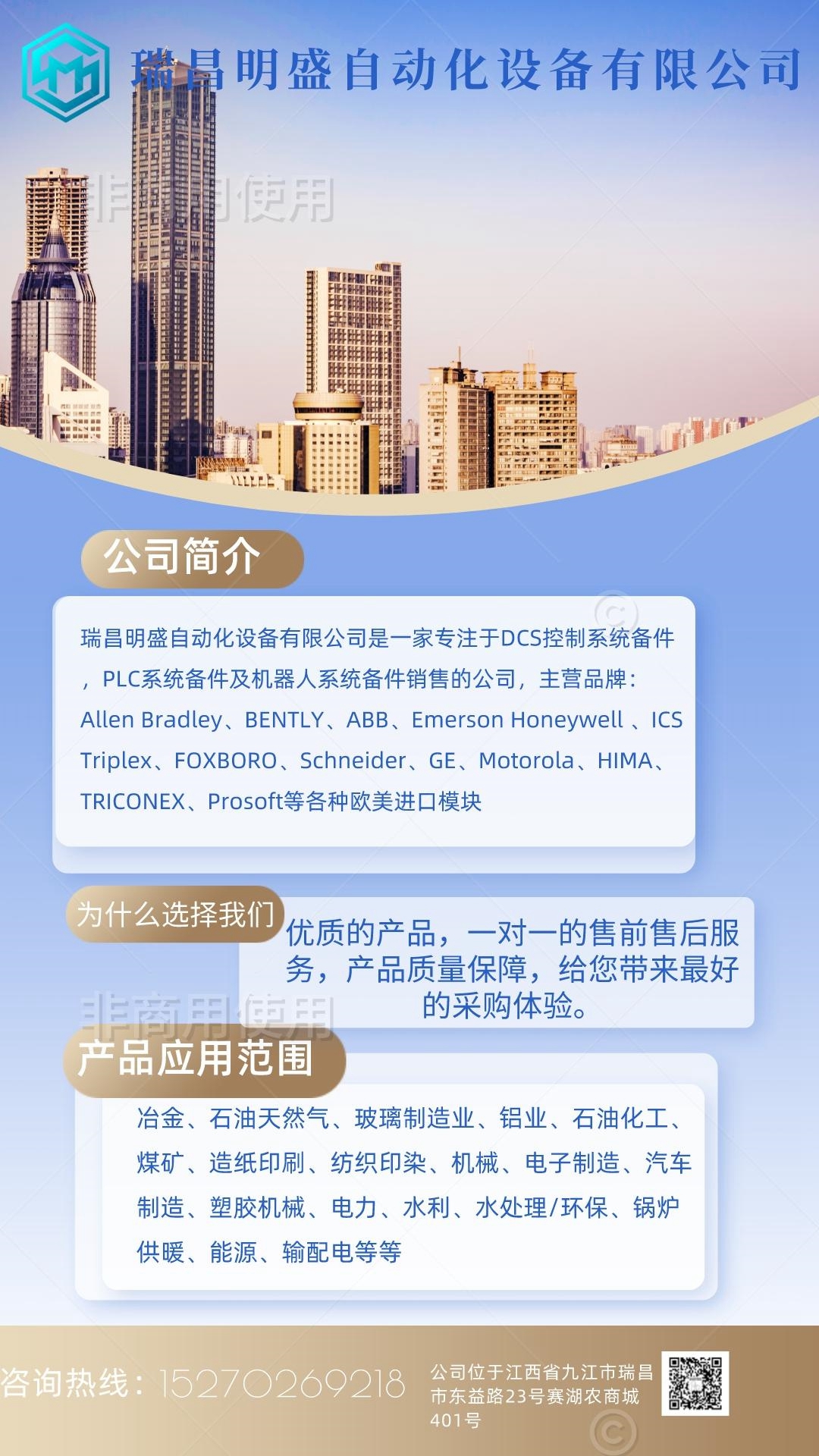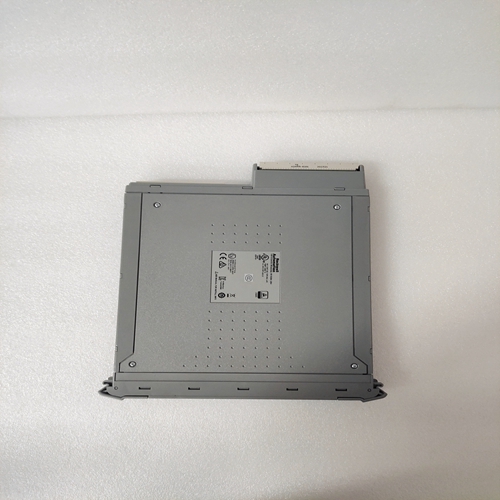ICS TRIPLEX T3464 PN200158機器人備件
NC R1跳閘觸點應(yīng)與接觸器線圈串聯(lián)。斷路器跳閘線圈的監(jiān)控要求監(jiān)控電路與R1跳閘繼電器輸出觸點并聯(lián)。通過這種連接,監(jiān)控輸入電路在觸點兩端設(shè)置阻抗,通過斷路器跳閘線圈抽取2 mA電流(對于30至250 V DC的外部電源電壓)。監(jiān)控電路將此涓流電流的損失作為故障條件進行響應(yīng)。配備標(biāo)準(zhǔn)控制電路的斷路器具有斷路器輔助觸點,僅當(dāng)斷路器閉合時,才允許跳閘線圈通電。當(dāng)這些觸點斷開時,如起動器狀態(tài)數(shù)字輸入監(jiān)控斷路器輔助觸點所檢測到的,跳閘線圈監(jiān)控電路將自動禁用。該邏輯允許僅在斷路器閉合時監(jiān)測跳閘電路。?R2輔助、R3輔助:輔助繼電器可編程用于跳閘回聲、報警回聲、跳閘備用、報警區(qū)分、控制電路和許多其他功能。它們應(yīng)根據(jù)配置保證進行接線。?R4報警:報警繼電器應(yīng)連接到適當(dāng)?shù)膱缶骰虮O(jiān)控裝置。?R5阻斷啟動:該繼電器應(yīng)與斷路器或接觸器配置中的啟動按鈕串聯(lián),以防止電機啟動。當(dāng)斷路器上的跳閘未復(fù)位時,閉鎖啟動繼電器會阻止啟動嘗試,從而導(dǎo)致立即跳閘。任何鎖定功能也指向塊啟動繼電器。?R6維修:如果469診斷中的任何一個檢測到內(nèi)部故障或控制電源丟失,維修繼電器將工作。該輸出可通過報警器、PLC或DCS進行監(jiān)控。如果認(rèn)為電機比過程更重要,維修繼電器NC觸點也可以與斷路器應(yīng)用中的跳閘繼電器并聯(lián)連接,或者NO觸點可以與接觸器應(yīng)用中的脫扣繼電器串聯(lián)連接。這將提供電機的故障安全操作;也就是說,如果469沒有保護電機,電機將從線路上跳閘。但是,如果過程是關(guān)鍵的,則此類故障的通知將允許操作員或操作計算機繼續(xù)或順序停機。詳見下圖。圖2-22:接觸器備用接線警告2-18 469電機管理繼電器GE Multilin 2.2電氣2安裝2 2.2.10拉出指示器拉出指示器只是端子E12至F12之間的跳線。當(dāng)469從外殼中取出時,端子E12和F12斷開。這可能有助于區(qū)分R6 SERVICE繼電器指示的控制功率損失和裝置的退出。2.2.11 RS485通信端口提供兩個獨立的雙線RS485端口。多達(dá)32 469可以在通信信道上菊花鏈連接在一起,而不超過驅(qū)動器的能力。
applications, the NC R1 Trip contact should be wired in series with the contactor coil. Supervision of a breaker trip coil requires that the supervision circuit be in parallel with the R1 TRIP relay output contacts. With this connection made, the supervision input circuits place an impedance across the contacts that draws a 2 mA current (for an external supply voltage from 30 to 250 V DC) through the breaker trip coil. The supervision circuits respond to a loss of this trickle current as a failure condition. Circuit breakers equipped with standard control circuits have a breaker auxiliary contact permitting the trip coil to be energized only when the breaker is closed. When these contacts are open, as detected by the Starter Status Digital Input monitoring breaker auxiliary contacts, trip coil supervision circuit is automatically disabled. This logic allows the trip circuit to be monitored only when the breaker is closed. ? R2 AUXILIARY, R3 AUXILIARY: The auxiliary relays may be programmed for trip echo, alarm echo, trip backup, alarm differentiation, control circuitry, and numerous other functions. They should be wired as configuration warrants. ? R4 ALARM: The alarm relay should connect to the appropriate annunciator or monitoring device. ? R5 BLOCK START: This relay should be wired in series with the start pushbutton in either a breaker or contactor configuration to prevent motor starting. When a trip has not been reset on a breaker, the block start relay prevents a start attempt that would result in an immediate trip. Any lockout functions are also directed to the block start relay. ? R6 SERVICE: The service relay operates if any of the 469 diagnostics detect an internal failure or on loss of control power. This output may be monitored with an annunciator, PLC or DCS. If it is deemed that a motor is more important than a process, the service relay NC contact may also be wired in parallel with the trip relay on a breaker application or the NO contact may be wired in series with the trip relay on a contactor application. This will provide failsafe operation of the motor; that is, the motor will be tripped off line in the event that the 469 is not protecting it. If however, the process is critical, annunciation of such a failure will allow the operator or the operation computer to either continue, or do a sequenced shutdown. See the following figure for details. Figure 2–22: ALTERNATE WIRING FOR CONTACTORS WARNING 2-18 469 Motor Management Relay GE Multilin 2.2 ELECTRICAL 2 INSTALLATION 2 2.2.10 DRAWOUT INDICATOR The Drawout Indicator is simply a jumper from terminals E12 to F12. When the 469 is withdrawn from the case, terminals E12 and F12 are open. This may be useful for differentiating between loss of control power as indicated by the R6 SERVICE relay and withdrawal of the unit. 2.2.11 RS485 COMMUNICATIONS PORTS Two independent two-wire RS485 ports are provided. Up to 32 469s can be daisy-chained together on a communication channel without exceeding the driver capability.












